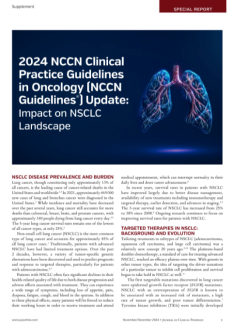Strategies to Enhance Cancer Screening Access for Patients With Disabilities
Cancer remains a leading cause of mortality worldwide, with 10 million deaths reported in 2022 and projections indicating 28.4 million new cases by 2040. Despite the proven benefits of population-based cancer screening programs, patients with disabilities—who represent 1.3 billion people globally—continue to experience disparities in access and outcomes. A recent qualitative evidence synthesis, published in the Journal of Intellectual Disabilities, analyzed 32 studies to better understand the barriers patients with disabilities encounter when accessing cancer screening services.
The findings, framed using Levesque’s conceptual model of health care access, identified multiple factors affecting screening participation, including awareness, affordability, family and caregiver involvement, and health care provider interactions. Many patients with disabilities struggle to obtain or understand screening information due to low literacy levels, cognitive challenges, or ineffective communication from health care professionals. For some, reliance on family members or caregivers to schedule appointments and facilitate access plays a crucial role; however, assumptions about disability, sexual activity, or perceived need for screening can lead to decisions that limit participation. Professional attitudes also influence screening uptake, with some providers overlooking preventive care for patients with complex disabilities, while others demonstrate flexibility and attentiveness that improve the screening experience.
Physical and logistical barriers further restrict access to screening programs. Many patients with disabilities report difficulties with transportation, inaccessible facilities, and inadequate accommodations, such as examination tables that are too high or mammography machines that cannot be adjusted for those who use a wheelchair. The lack of alternative screening methods or flexible scheduling also creates frustration, as some individuals require additional time for communication, positioning, or personal assistance. Financial constraints add another layer of complexity, with indirect costs such as transportation or interpreter services sometimes deterring individuals from seeking screening, even when the procedure itself is covered by insurance or national health care programs.
Improving access to cancer screening for this patient population requires a multifaceted approach that includes disability awareness training for health care providers, enhanced communication strategies, and structural changes to screening facilities and protocols. Making information available in accessible formats, ensuring adequate accommodations at screening sites, and developing policies that encourage proactive engagement with patients with disabilities can help bridge the gap in screening participation. Given the persistent disparities in cancer outcomes among this patient populations, addressing these barriers is essential to achieving equitable access to early detection and preventive care.
“The insights gained from this QES review can guide future decisions on implementing strategies or interventions to improve population-based screening access for disabled people,” researchers concluded. “Additionally, this research provides valuable perspectives to policymakers, guideline developers, and practitioners involved in screening services regarding the experiences of disabled people and their caregivers concerning the need for screening procedures.”
Reference
Cithambaram K, Corby D, Hartnett L, et al. Population-based cancer screening access needs of disabled people: a qualitative evidence synthesis. J Intellect Disabil. Published online January 6, 2025. doi:10.1177/17446295241308708

















